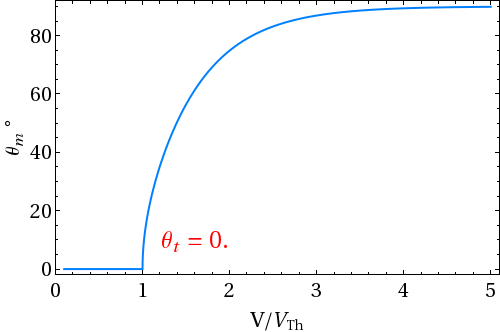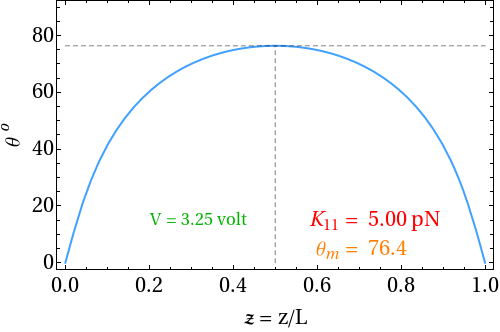The nematic medium does not exhibit spontaneous polarization due to the apolar nature of the director. A macroscopic polarization can be induced in a nematic liquid crystal by splay and bend distortions of the director field. This was first shown by Meyer in 1969. According to Meyer’s model only nematics made of polar molecules with shape anisotropy can be expected to exhibit flexoelectricity. For example, a nematic consisting of pear shaped molecules with longitudinal dipole moments become polarized under splay distortion and a nematic made of banana shaped molecules with transverse dipole moments becomes polarized under bend distortion. In the undistorted state, the dipole moments of the molecules are oriented with equal probability in opposite directions. They cancel each other and the net dipole density is zero.
Let a nematic be made of pear or wedge shaped molecules with longitudinal dipole moments [Figure 4.1(a)]. If the system is deformed with splayed director [Figure 4.1(b)], the efficient packing of the molecules generates a net dipole moment, resulting in a macroscopic polarization. A similar type of effect is also observed in a nematic made of banana shaped molecules with transverse dipole moments [Figure 4.2(a)] subjected to a bend distortion [Figure 4.2(b)].
 |
| Figure 4.1: A nematic consisting of pear-shaped molecules with longitudinal dipole moments becomes polarized under splay deformation |
 |
| Figure 4.2: A nematic consisting of banana-shaped molecules with transverse dipole molecules becomes polarized under bend distortion |
There have been several techniques to measure the flexoelectric coefficients of nematics. Dozov et. al. devised a simple experimental technique using Hybrid Aligned Nematic (HAN) cell. In HAN cell bottom plate is coated for homogeneous alignment and the top plate is coated to get homeotropic alignment. The anchoring at the two surfaces is assumed to be strong. The director field in such a cell has a permanent splay-bend distortion, which generates flexoelectric polarization. Two wire electrodes are used as spacers to apply a field perpendicular to the plane of the distorted director. At the bottom plate, the director is along the X axis and the tilt angle reduces continuously on moving towards the upper plate where the director is oriented along the Z axis. The tilt angle θ is a function of the coordinate z. If a uniform dc electric field E is applied along the Y axis, a twist distortion is produced in the medium due to the action of E on polarization. Under the action of E, the director continuously twists, getting a component along the Y axis with the twist angle φ also being a function of z.
 |
| Figure 4.3: Side view of the HAN cell.Arrow indicates the field direction |
 |
| Figure 4.4: Side view of the HAN cell. Arrow indicates the field direction and length indicates the strength of field. |
































